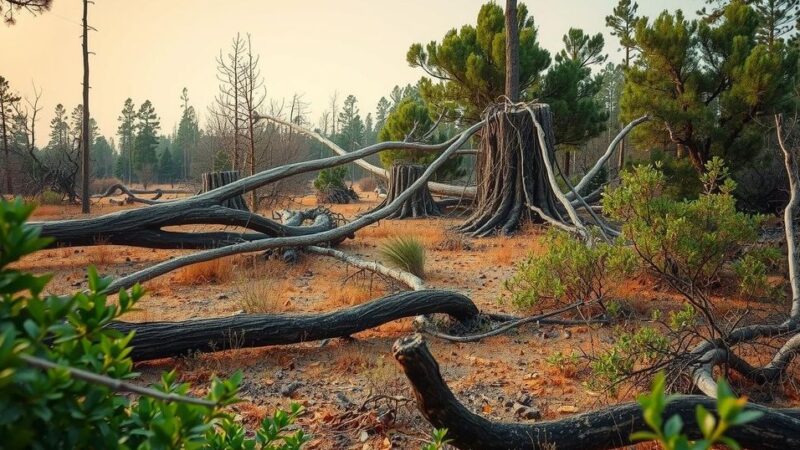A new study reveals that cut-off lows, intense slow-moving storms, are becoming more frequent and shifting northward due to climate change. Areas such as Canada, northern Europe, Siberia, and China will face earlier and heavier spring rainfall, resulting in heightened flood risks. Experts advocate for adaptation measures, including natural flood defenses and upgraded infrastructure, to mitigate the devastating impacts of these storms.
Recent research published in the Communications Earth & Environment journal highlights significant concerns regarding emerging weather patterns known as cut-off lows. These slow-moving weather systems are becoming increasingly intense and altering their trajectories due to climate change. A study conducted by the Wegener Center at the University of Graz, in collaboration with researchers from the U.K. and Italy, evaluated 18 climate models and concluded that these storms are moving northward and occurring earlier in the year, which could lead to heavier spring rainfall in affected regions.
The scientists found that areas such as Canada, northern Europe, Siberia, and China must prepare for increased rainfall, particularly in early spring. “We expect that persistent cut-off lows north of 40 degrees latitude and in East Asia will occur earlier in the year,” stated Douglas Maraun, the project’s lead researcher. These conditions pose a heightened risk of frequent and intense flooding in regions already grappling with the repercussions of extreme weather.
The impact of such rainfall can be catastrophic, leading to extensive property damage, infrastructural collapse, and even loss of life. Due to the prolonged nature of cut-off lows, they can release monumental amounts of rain, often exceeding flood defenses. The 2021 floods in Germany and recent events in central Europe exemplify the devastating effects of these systems, with warnings from scientists that such occurrences are likely to escalate.
This changing storm pattern raises alarm, particularly for areas ill-prepared for sustained heavy rainfall. Without proactive adaptation measures, urban and rural communities risk facing grave economic and humanitarian challenges associated with increased flooding. To address this issue, experts emphasize the importance of both emission reduction and preparation for wetter conditions.
Douglas Maraun noted that, “With targeted measures such as renaturation and a functioning early warning system, we can at least partially protect ourselves from extreme weather and the impacts of climate change.” Researchers advocate for restoring natural flood defenses, such as wetlands, which can absorb excess water. Additionally, upgrading infrastructure—like improving drainage systems—will enhance cities’ resilience to sudden downpours.
On a broader scale, reducing dependence on fossil fuels is crucial in mitigating climate change and moderating conditions that intensify storms. Government and municipal initiatives focusing on renewable energy and environmental restoration are vital steps toward lessening the severity of extreme weather events. The decisions we implement today will significantly influence our ability to withstand future storm challenges.
In conclusion, the emerging weather phenomenon of cut-off lows presents significant challenges for many regions experiencing climate change. As storms become stronger and more frequent, communities must adapt proactively to mitigate the risks associated with flooding. Key strategies include reinforcing natural flood defenses, updating infrastructure, and reducing carbon emissions through sustainable practices. Effective measures taken today will be imperative for navigating the storms of tomorrow.
Original Source: www.thecooldown.com






